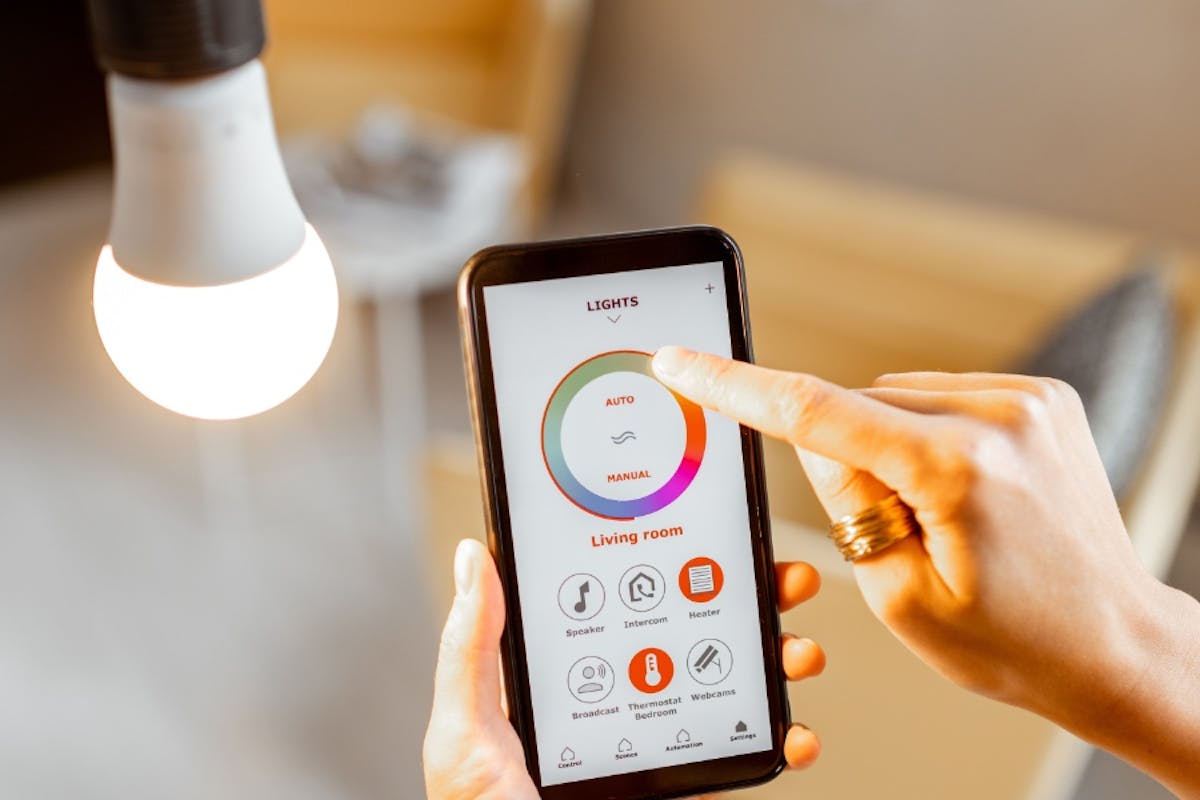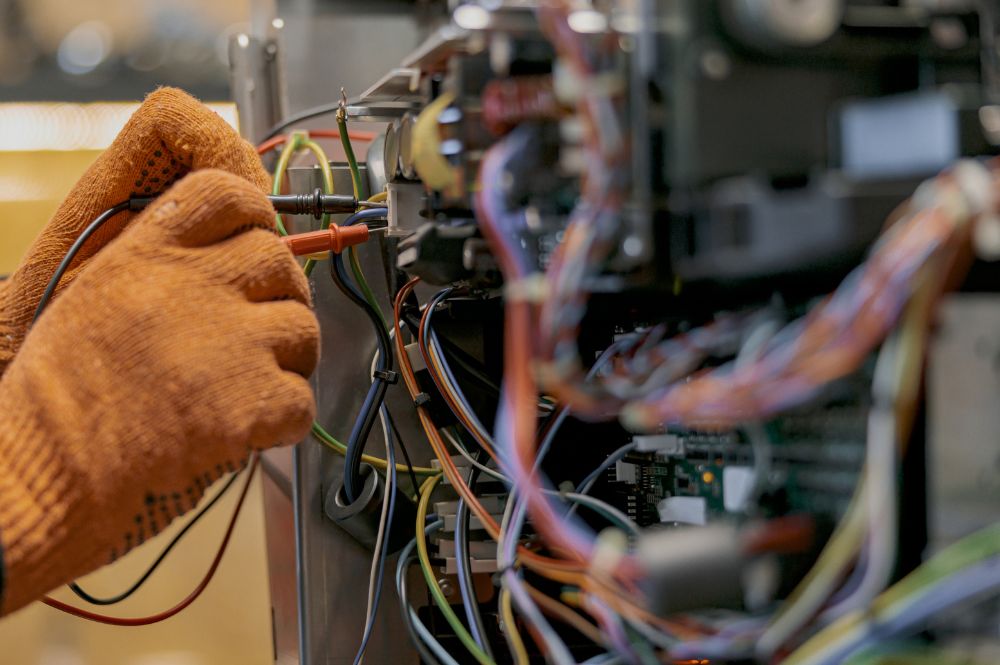5 Benefits of Smart Lighting You Can’t Ignore
5 Benefits of Smart Lighting You Can’t Ignore in the age of technology, where innovation is ever-evolving, the way we illuminate our homes and workspaces has undergone a remarkable transformation. Smart lighting is one such revolutionary advancement, offering far more than just the ability to flick a switch. This technology is reshaping how we interact with light, making it an essential addition to modern homes and offices. Whether you’re looking to enhance convenience, reduce energy consumption, or add a touch of luxury to your space, the benefits of smart lighting are undeniable.
Let’s dive into the five key benefits of smart lighting that make it an essential choice for anyone aiming to upgrade their home or office environment.

1. Energy Efficiency: Save Money and the Planet
One of the most compelling benefits of smart lighting is its energy efficiency. Traditional incandescent bulbs are notorious for their high energy consumption, but smart lighting systems, particularly those equipped with LED technology, are much more energy-efficient. LED bulbs use a fraction of the energy required by traditional bulbs, while also lasting significantly longer. This means fewer replacements and a reduced carbon footprint.
In addition to the inherent energy efficiency of LEDs, smart lighting systems offer automated features that help conserve power. With the ability to schedule lights to turn on and off at specific times, or to activate only when someone is in the room, smart lighting allows homeowners to reduce energy waste. You can set your lights to automatically switch off when not in use, ensuring that they are never left on accidentally, even when you’re not home.
Moreover, advanced features like dimming can further save energy. Instead of keeping lights at full brightness, smart lighting allows you to adjust the intensity based on your needs. This intelligent adaptability not only helps lower your electricity bill but also plays a significant role in reducing overall energy consumption, which contributes to a more sustainable environment.
2. Convenience and Control at Your Fingertips
Another major benefit of smart lighting is the unparalleled level of convenience it offers. No longer do you have to fumble for switches or manually adjust the brightness in every room. With smart lighting, control is right at your fingertips—whether through an app on your phone, a smart speaker, or even voice commands. Imagine coming home to a well-lit house after a long day, without having to reach for the switch. Simply speak the command or use your phone to activate the lights as you approach the door.
Most smart lighting systems are compatible with virtual assistants such as Amazon Alexa, Google Assistant, or Apple HomeKit. This means that you can control the lighting in your home with nothing but a few words. Whether you’re in the kitchen, the living room, or relaxing in bed, there’s no need to get up to adjust the lighting—just say, “Hey Siri, dim the lights,” or “Alexa, turn on the living room lights.”
Additionally, smart lighting systems can be set up to work in harmony with other smart devices in your home. For example, when you activate your smart thermostat, your lighting can automatically adjust to a comfortable brightness. This seamless integration between devices adds a level of automation that simplifies your life and enhances your comfort.
3. Enhanced Security Features for Peace of Mind
Smart lighting isn’t just about convenience and ambiance; it also plays a crucial role in enhancing the security of your home. One of the most effective ways to deter potential intruders is by making it appear as though someone is home, even when you’re away. With smart lighting, you can program your lights to turn on and off at random times throughout the day and night, creating the illusion of activity inside your home.
Many smart lighting systems come with motion sensors, which are perfect for outdoor security lighting. These lights activate when they detect movement, illuminating your driveway, porch, or yard. This not only provides additional security but also prevents you from having to stumble through a dark yard after dark. Furthermore, if you’re returning home late at night, your outdoor lights can be programmed to automatically turn on when they sense your approach.
For even more peace of mind, some smart lighting setups allow you to monitor and control the lights remotely through an app. This means that even if you’re on vacation or at work, you can keep an eye on your home’s lighting and ensure everything is safe. This integration with security systems adds an extra layer of protection to your home.
4. Customized Ambiance for Every Occasion
Another one of the significant benefits of smart lighting is its ability to transform the atmosphere of any space with ease. The power of lighting to influence mood and ambiance is well-known. Whether you’re hosting a dinner party, relaxing after a busy day, or setting the mood for a romantic evening, the lighting can make all the difference. With smart lighting, you can create the perfect setting for any occasion with just a tap on your phone or a voice command.
Smart lighting systems offer a variety of features that allow you to adjust brightness, color temperature, and even the color of your lights. You can opt for warm, golden hues for a cozy and inviting feel, or cool, bright whites for an energizing, productive environment. Some smart lighting systems even offer the ability to change the colors of your lights entirely, providing endless possibilities for creating personalized lighting effects.
For example, you can set your lights to a soft, amber glow for movie nights, or program the lighting to gradually dim as you wind down for bed, promoting better sleep. For those who enjoy a touch of creativity, many systems allow you to sync the lights with your favorite music or TV shows, creating a dynamic, immersive experience. The ability to adjust the lighting based on your activities or the time of day is a major plus, making your home not only smarter but more stylish.
5. Long-Term Cost Savings and Durability
When it comes to home improvement investments, cost savings over time are a big selling point. Smart lighting provides considerable long-term savings that make it a wise financial decision. While the initial investment may be higher than traditional lighting systems, the energy efficiency of smart lighting technology pays off in the long run. As mentioned earlier, LED smart bulbs use much less energy than incandescent bulbs, and because they last much longer, you won’t need to replace them as often. Some smart bulbs are rated to last for over 25,000 hours, compared to traditional bulbs, which may only last 1,000 hours.
Furthermore, many smart lighting systems offer automation features that help you optimize energy use and minimize waste. Whether it’s programming lights to turn off when you leave the house or setting up scenes that adjust based on your schedule, these smart features ensure that you’re not using more energy than necessary. As your lighting system becomes more energy-efficient, your electricity bills will decrease, providing you with ongoing savings.
Another point to consider is the durability of smart lighting systems. High-quality smart bulbs and components are designed to withstand wear and tear far better than their traditional counterparts. Many of these systems are built with advanced materials that are resistant to heat, vibration, and other environmental factors, ensuring that your investment lasts for many years.
How to Get Started with Smart Lighting Technology
If you’re ready to reap the benefits of smart lighting, the process of getting started is relatively simple. There are a few key components you’ll need to consider when planning your smart lighting setup:
1. Choose Your Smart Lighting System
The first step is to decide which smart lighting system suits your needs. You’ll need to choose between different types of smart bulbs, light switches, dimmers, and motion sensors. Popular brands like Philips Hue, LIFX, and TP-Link offer a wide range of products that are compatible with various smart home platforms, such as Amazon Alexa, Google Assistant, and Apple HomeKit.
2. Set Up the Hub or Bridge
In many cases, smart lighting systems require a hub or bridge to connect the lights to your Wi-Fi network. This hub acts as the central control point for all your devices. Some systems, like Philips Hue, offer hubs that work with a variety of other smart home devices, allowing for greater integration.
3. Install and Integrate
Once your smart lighting devices are ready, the next step is installation. Smart bulbs can be installed just like regular light bulbs, while smart switches and dimmers may require some basic wiring (or professional assistance). After installation, connect your system to your smartphone app or virtual assistant for easy control.
4. Personalize Your Lighting
Now comes the fun part: customization! Set schedules, adjust brightness levels, and experiment with colors to create the ideal lighting conditions for different activities. With the flexibility that smart lighting technology offers, you’ll quickly see why it’s a game-changer for your home.
The benefits of smart lighting extend far beyond mere convenience. From reducing your energy bills and enhancing your home’s security to creating personalized lighting for every occasion, this technology is truly changing the way we live. Whether you’re upgrading your home or setting up a new one, smart lighting offers an exciting, future-proof solution for creating a more efficient, comfortable, and stylish living space.
If you’re looking to simplify your life, save money, and enjoy a brighter, more customizable environment, the time to embrace smart lighting technology is now. The future of lighting has arrived, and it’s smarter than ever!







